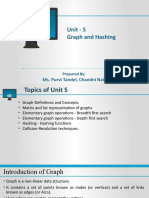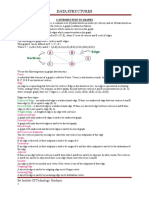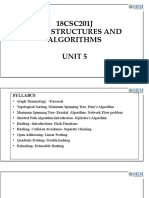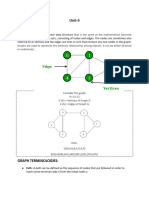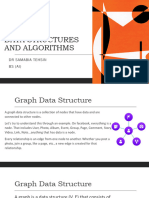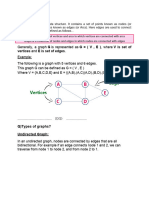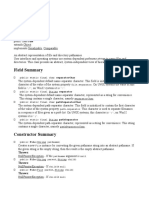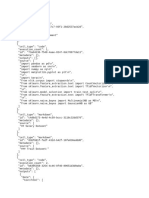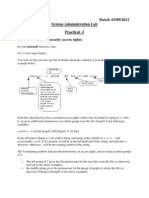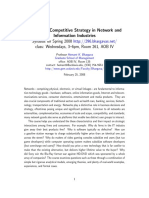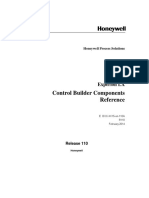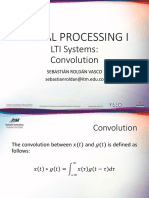0% found this document useful (0 votes)
37 views10 pagesData Sructures Graphs
The document discusses different types of graphs and graph traversal techniques. It defines graphs, vertices, edges and different representations like adjacency matrix and adjacency list. It also explains directed and undirected graphs along with depth first search and breadth first search algorithms for graph traversal.
Uploaded by
najeebayyaril6Copyright
© © All Rights Reserved
We take content rights seriously. If you suspect this is your content, claim it here.
Available Formats
Download as PDF, TXT or read online on Scribd
0% found this document useful (0 votes)
37 views10 pagesData Sructures Graphs
The document discusses different types of graphs and graph traversal techniques. It defines graphs, vertices, edges and different representations like adjacency matrix and adjacency list. It also explains directed and undirected graphs along with depth first search and breadth first search algorithms for graph traversal.
Uploaded by
najeebayyaril6Copyright
© © All Rights Reserved
We take content rights seriously. If you suspect this is your content, claim it here.
Available Formats
Download as PDF, TXT or read online on Scribd
/ 10

